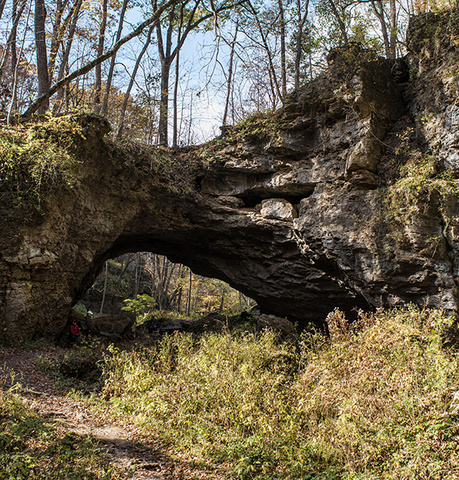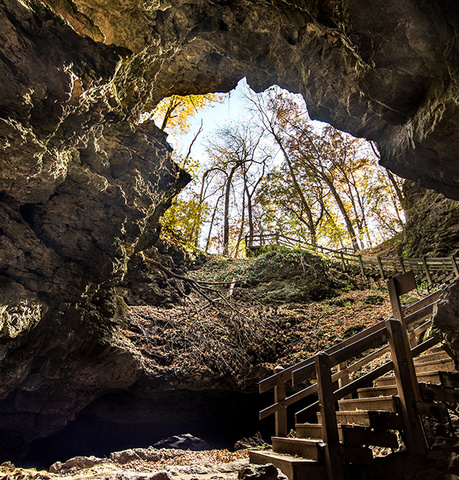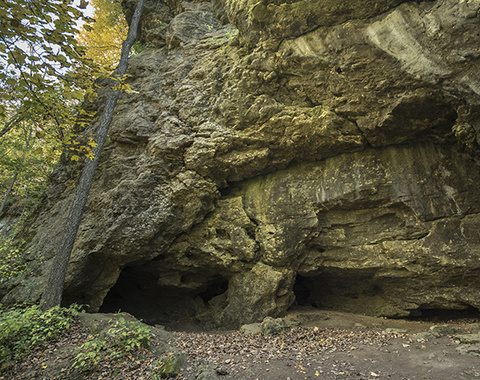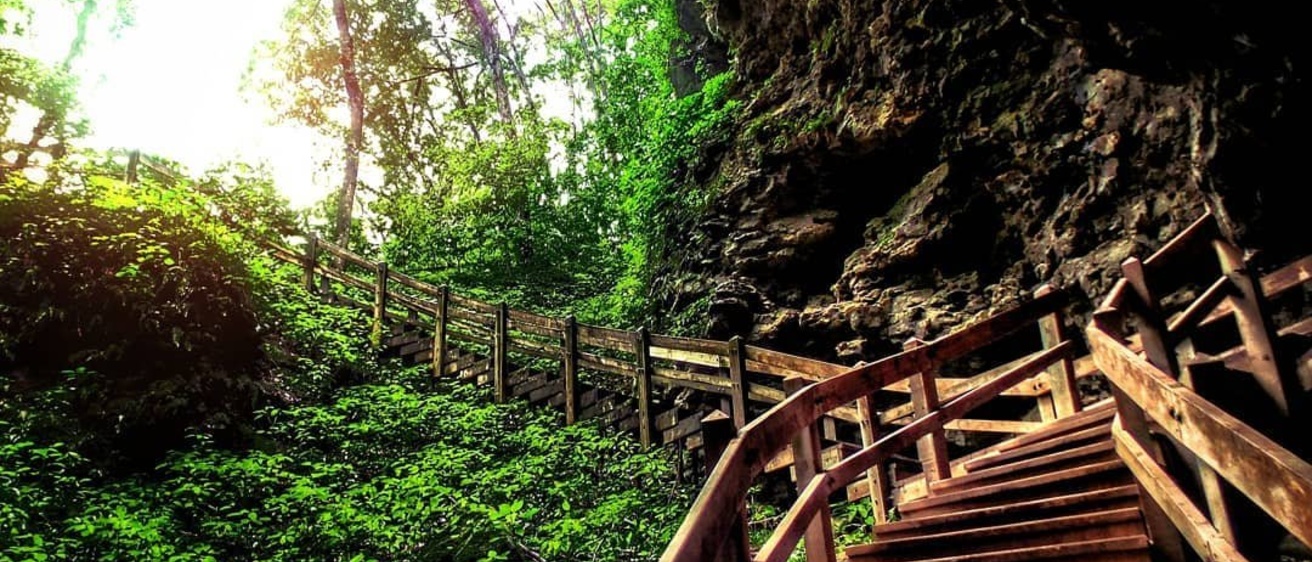Feeling adventurous? A visit to Iowa’s Maquoketa Caves State Park in east-central Iowa may be just the thing!

Caves with intriguing names such as Fat Man’s Misery and Dancehall Cave offer opportunities for amateur spelunkers to see beautiful and unique geological features.
Maquoketa Caves State Park encompasses 192 acres in Jackson County northwest of Maquoketa. A series of 13 caves, a balanced rock, and a natural bridge are among the features found in the park. Efforts to protect the caves began in the 1920s when private groups began purchasing land in the area. Iowa officially designated Maquoketa Caves as a state park in 1933.
The spectacular rocks in Maquoketa Caves State Park are Silurian age dolomites. The rocks initially formed as deposits of lime sediment on the bottom of an extensive shallow tropical sea about 430 million years ago. The lime sediments were converted to dolomite in a process called dolomitization, likely later in the Silurian as the seas withdrew across the region.
These seas were inhabited by a variety of creatures, whose remains can be found as fossils and fossil molds in the rocks. Fossil molds are the result of the original fossil material dissolving during dolomitization, which leaves an external and sometimes an internal mold. Fossils identified in the rocks include: crinoids (sea lilies), corals, sponges (stromatoporoids), bryozoans, brachiopods, snails (gastropods), clams (bivalves), nautiloids, and trilobites.

The caves, sinkholes, and other features in the park are prime examples of karst topography. Karst topography forms by the dissolving action of groundwater on carbonate rock. The caves in the park can be classified as either solutional or mechanical, depending on how they formed.
Solutional caves begin with groundwater following cracks and fractures in the rock. Groundwater contains a weak, naturally occurring acid. The dolomites dissolve as groundwater moves through the cracks and fractures, which enlarge and allow more groundwater to flow, causing more dissolution. Over thousands of years, small cracks and fractures become large voids, which in turn become caves. Dancehall Cave is an example of a solution cave within the park.
Mechanical caves form when large blocks of rock collapse. Water seeping through the dolomite lubricates underlying rocks. Under the influence of gravity, blocks of dolomite can slide and rotate, creating fractures and caves. Fat Man’s Misery is an example of a mechanical cave within the park.
Groundwater is also responsible for features visible in the caves. The groundwater can deposit calcium carbonate as it flows through air-filled portions of caves. Water dripping from the cave’s ceiling forms hollow, cylinder-shaped soda straws or solid, cone-shaped stalactites. Water splashing on the cave’s floor forms stalagmites. Water flowing on the cave’s walls forms flowstone.

Many features in the park are the remnants of a larger cave system. Erosion collapsed portions of the original cave’s roof. Many of the current caves are believed to have been side passages in the larger cave. The park’s “Natural Bridge” formed as a result of this collapse.
A six-mile trail connects all the caves, each of which is unique. The largest, Dancehall Cave, offers a lighted walkway and can be explored by walking. Other caves require a flashlight and crawling to explore. A short program at the park teaches visitors about White Nose Syndrome (a disease that kills bats) and is required for those planning to explore the caves.
